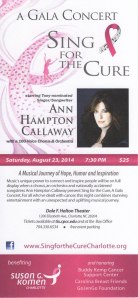I really thought I was making progress on sight-reading. I can use music notation to learn a tune that I didn’t hear first, which I never thought would be possible. Even though I have to work through it measure by measure, with a lot of patience and a lot of slow practice, I can learn to play it. In the early music ensembles I can keep up with what and where I am supposed to be playing even when my fingers aren’t grabbing the notes on the recorder. Now that I am not panicking every time I miss a note, my eyes can move forward and I can get back in and play without getting totally lost. And over the holidays I discovered that I could slowly sight-read and sight-play most of one of my Celtic tune books, as well as sight-play some of the simple Christmas carol arrangements published in The Folk Harp Journal.
So, I really thought I was getting somewhere with the reading. And I thought that I would be ready for this spring’s “boot camp” harp ensemble class, even knowing that most of the class would be spent sight-reading.
Last Monday’s class proved otherwise. Our teacher excerpted several measures from classical harp pieces, changed the time signatures, and created fingering exercises which we were to sight-read and play. There was nothing that sounded familiar, nor any tonal patterns that my ears could grab hold of to help my eyes make sense of the notes. With my auditory system useless, my visual processing system failed. I could not see any recognizable patterns of notes that could tell me where on the strings my fingers should be. There I was, playing my own discordant solos as other class members plucked their way through the exercises in melodious unison.
During a break in playing I tried writing in note names and drawing circles around familiar note patterns, but even with notes, triads and scales identified, the tempo was too fast for me to shift from one little bit of what I could understand and play, to the next little bit. The notes once again were incomprehensible spots on a piece of paper. The sight-reading door in my brain that I thought was finally propped open a bit, slammed shut.
Being with others who sight-read easily is like being with people at an ice cream parlor who know how to whip up fabulous hot fudge sundaes and banana splits and parfaits. They walk inside with confidence, grab their scoops, and fill their bowls with delicious creations that I am never going to taste. After the holidays, I was excited that I could tiptoe into the ice cream parlor and dish myself up a scoop of vanilla. But now I am back on the sidewalk, nose pressed against the window looking in, with all that is inside inaccessible once again.
Five days later, that door in my brain is still shut tight. I’m working on new pieces for a harp chapter concert a month from now. I asked for the easy-peasy harp parts, the ones that the beginning students will play, since I’ll have to use the music to perform them. There’s just no time for my usual strategy: learn how to play and then memorize the tunes, so I don’t need the stinkin’ music.
Today the sight of the black concert notebook on my music stand makes me cry. Tension spreads down my arms and into my hands as I open it. The chords of the Pachelbel Canon might as well be bowling balls stacked on top of each other, for all the sense I can make of them. I feel my brain shut down, feel the “road closed” sign for the route from my eyes to my visual cortex start flashing. There’s no point in working on this music today. I wonder if there will be any point in working on it tomorrow. My only hope for the concert may be to hide behind a row of pedal harps, where my one-handed playing of the simple, repetitive bass melody can’t be seen.
I still struggle so to feel anything resembling confidence about playing the harp. I’ve no natural agility or coordination that allows my hands to dance upon the harp strings. Every finger motion is won with hours of drills and exercises to program the move into my muscles. Every movement of my right and left hand is choreographed and practiced so that the music flows between them. Every note I see and comprehend requires a circuitous route from eye to brain and internal naming, and then to my hand and my finger on the correct harp string.
It’s hard to remember and hard to believe that not being able to sight-read doesn’t mean that I am not able to play the harp, doesn’t mean that I am not able to create music. It’s hard to remember and hard to believe, living in a world that expects music to be something written and read, that music is sound and vibration, beauty and feeling, not notation, not black dots splattered on a ladder on a piece of paper.
It’s hard to remember that my ear and my heart love melody, that I learn a tune easily, that once I hear it, I remember it well. And it is hard to remember, in this midst of this latest failure, that there is a place for how I learn and how I play, even if no one is dishing up ice cream there.
Would you like to share this post?






